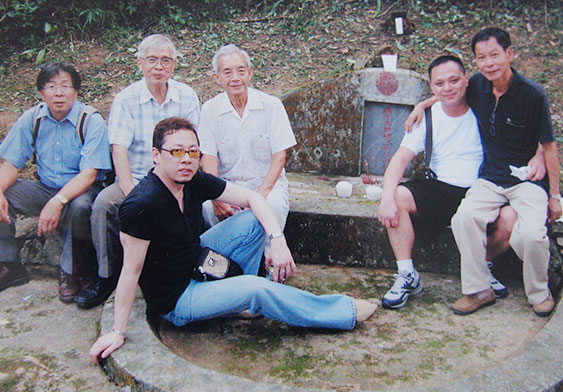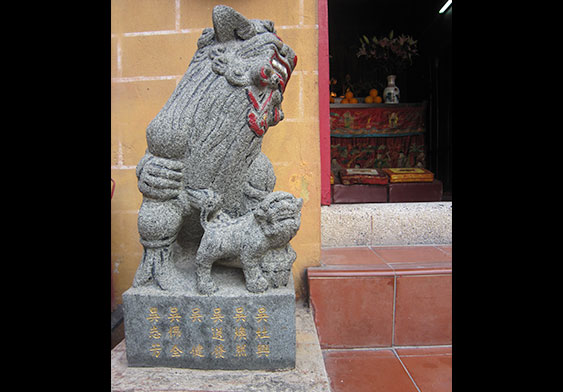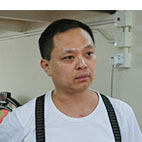
Renovation of ancestral grave
Grave of Ng Hon Ko Tso is at the hillside naer Mau Tat Village. There was large-scale of renovation in 2011. Picture shows the main organizing staffs of Hon Ko Tso affairs. Photographed in 2011.-Provided by Ng Fat Chuen
Renovation of ancestral grave
Grave of Ng Hon Ko Tso is at the hillside naer Mau Tat Village. There was large-scale of renovation in 2011. Picture shows the main organizing staffs of Hon Ko Tso affairs. Photographed in 2011.-Provided by Ng Fat Chuen

Stone lions next to the entrance of Tin Hau Temple
Clansmen of Ng Hon Ko Tso donated a pair of stone lions to the Tin Hau Temple in 1985.-Photo taken by HKMP Team (2012)
Stone lions next to the entrance of Tin Hau Temple
Clansmen of Ng Hon Ko Tso donated a pair of stone lions to the Tin Hau Temple in 1985.-Photo taken by HKMP Team (2012)
Being proud of the prominent history of Nga Tsin Wai
Ng Chin Hung felt proud about the identity of Nga Tsin Wai’s indigenous inhabitants when he inspected a map that had been drawn by the British army engineer and noted cartographer, Collinson, in 1845. Nga Tsin Wai village was located in the centre of the map, having a trench and a high fort surrounded by a moat. ‘The old town Cowloon’ (sic) was even marked on the map. This was the only sizeable village, and only Nga Tsin Wai in the entire Kowloon that had a ‘city’. Back then, Kowloon Walled City had not yet been built, and Kowloon City as we know it now was still nothing more than a barren plot of land along what is now Fuk Lo Tsun Road. Ng Chin Hung thought that the name ‘Kowloon City’ was actually derived from outsiders’ use of the words ‘Nga Tsin Wai’. It seems that Nga Tsin Wai Road also originally gave its name to the coastal road leading to Nga Tsin Wai.


 BACK
BACK  CLOSE
CLOSE 